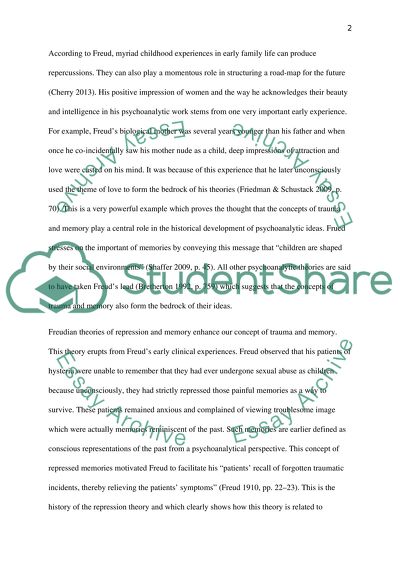Cite this document
(“In what ways are the concepts of trauma and memory central to the Essay - 1”, n.d.)
In what ways are the concepts of trauma and memory central to the Essay - 1. Retrieved from https://studentshare.org/psychology/1646608-in-what-ways-are-the-concepts-of-trauma-and-memory-central-to-the-historical-development-of-psychoanalytic-ideas
In what ways are the concepts of trauma and memory central to the Essay - 1. Retrieved from https://studentshare.org/psychology/1646608-in-what-ways-are-the-concepts-of-trauma-and-memory-central-to-the-historical-development-of-psychoanalytic-ideas
(In What Ways Are the Concepts of Trauma and Memory Central to the Essay - 1)
In What Ways Are the Concepts of Trauma and Memory Central to the Essay - 1. https://studentshare.org/psychology/1646608-in-what-ways-are-the-concepts-of-trauma-and-memory-central-to-the-historical-development-of-psychoanalytic-ideas.
In What Ways Are the Concepts of Trauma and Memory Central to the Essay - 1. https://studentshare.org/psychology/1646608-in-what-ways-are-the-concepts-of-trauma-and-memory-central-to-the-historical-development-of-psychoanalytic-ideas.
“In What Ways Are the Concepts of Trauma and Memory Central to the Essay - 1”, n.d. https://studentshare.org/psychology/1646608-in-what-ways-are-the-concepts-of-trauma-and-memory-central-to-the-historical-development-of-psychoanalytic-ideas.


